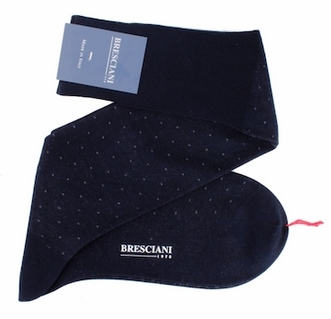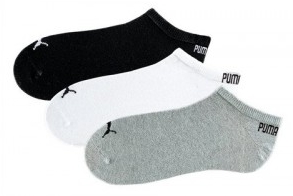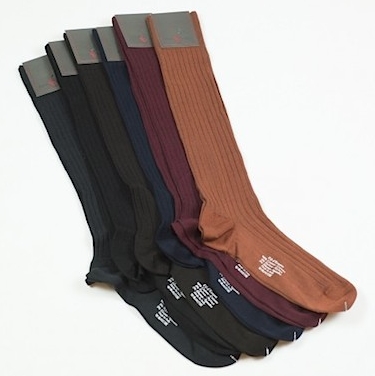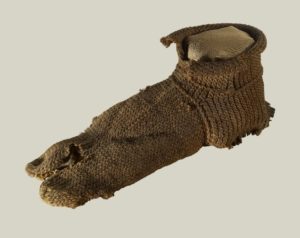As all know, socks – one of the most necessary and important objects of clothes. Correctly picked up socks positively affect general impression from the general appearance of the person, and here the socks which are picked up incorrectly, on the contrary, are capable to spoil completely in general successful “ensemble”. In this article I will tell about of what materials do socks what material in what situation is better and why, and also about flowers, the sizes, the prices and brands of socks. Of course, article is written with the emphasis on men’s socks, but, perhaps, it will be useful and to women.
Materials
Socks do of the most different materials. The most widespread is cotton, on the second place it is possible to put wool and polyamide. Socks also are made of viscose, bamboo fiber, nylon … The most refined socks are made from cashmere and silk, but they are very expensive and very impractical, though are beautiful, and are pleasant (are comfortable).
Cotton differs in a specific characteristics, well passes air, provides rather quite good thermal insulation. It is quite strong, simple in leaving and that is important, it is inexpensive. But it is necessary to remember that cotton happens the most different quality. Cheap looks shaky and quickly wears out. The road – especially fil d’ecosse – looks soundly and much longer serves. Respectively, socks from cotton it is more preferable; it is worth overpaying for them. Such socks are in assortment of Falke, Pantherella, Bresciani, Sozzi and even our Henderson. At desire it is possible to find such socks and for 100 rubles (the Russian production).
Wool is also hygienic, well passes air and besides has the excellent heat-insulating properties. Thin woolen socks are well combined with suits from woolen fabrics, with “winter” jackets, woolen cardigans and so on. Tolstoy (knitted) woolen socks, of course, are very informal.
Cotton, perhaps, nevertheless is more universal than wool: socks can practically be put on from it at all seasons of the year while socks from wool – generally late fall, in the winter and in the early spring; in the summer in them too hot.
It should be added that for bigger wear resistance for socks add 10-30% of nylon/polyamide to wool. It is not necessary to be afraid of it; socks from 100% of wool will wear out quicker than socks from wool with additives.
Lyon has excellent hygroscopicity (perfectly absorbs moisture) and air permeability and therefore is very hygienic material. Good thermal insulation and high wear resistance. Unfortunately, linen socks are more expensive cotton and on sale meet quite seldom.
Polyester and nylon. The socks made of these synthetic materials do not differ in air passing and good thermal insulation. Their only plus, perhaps – low price. But in a small amount polyester and nylon, on the contrary, are useful as they allow socks to hold a form, not to stretch too strongly (especially it true as I already noted, in relation to woolen socks). Respectively, the socks consisting, for example, for 80% of cotton and for 20% of polyester/polyamide can be recommended for purchase safely. 40% of synthetics and more – it is bad, it is necessary to refuse such socks.
Viscose – synthetic material which differs in good air permeability, and, respectively, in air proof. In small amounts viscose is added to cotton and woolen socks; you should not be afraid of this material, but to you it is not necessary and to forget that, for example, the heat-insulating properties at wool are higher, than at viscose. Besides, viscose can wear out quickly enough.
Wound – in fact, more advanced option of viscose. Has very high hygroscopicity (better, than at cotton), quite good appearance, pleasant texture and rather high durability (surpasses “usual” viscose in this indicator, but falls short, however, of qualitative cotton). Does not sit down, does not fade; it is elastic and maintains a large number of washings. From wound socks on average a little more expensively than socks from inexpensive cotton and from cotton mix with polyamide.
The elastane – is added in small amounts (5-10%) to cotton and woolen socks in order that they were softer and better kept a form. It is not necessary to be afraid of this material.
Recently socks from bamboo fiber were available for sale (in fact, a viscose variation). They have quite pleasant appearance, quite good air permeability, but wear resistance, in my opinion, low-cotton wool. The price – above, than at usual cotton socks, appearance depends on the producer
The most expensive socks do of cashmere, silk and mix of cashmere with silk. They cost very much, and it is necessary to reserve them for special cases. Combine such socks usually with tuxedos and very strict suits.
Colors
 Classical colors for socks are black, blue and gray. In some cases black even is only admissible, and it, perhaps, is most universal. Producers often smooth gloom of black color a simple not striking ornament, the relief drawing.
Classical colors for socks are black, blue and gray. In some cases black even is only admissible, and it, perhaps, is most universal. Producers often smooth gloom of black color a simple not striking ornament, the relief drawing.
Simple and not striking ornaments and drawings (strip, speck, very small dark cage) are admissible even in a combination to strict business suits. Naturally, complementary colors have to be soft: gray, blue (blue) and dark brown approach in the best way; are in some cases interesting mustard, dark red and even dark-purple. Socks with interesting classical drawings release such firms as Pantherella and Bresciani.
Informal socks happen the most different flowers, including pink, lilac, orange and so on. Drawings can be the most different too: for example, the large color cage tartane effectively looks; various rhombuses, and in certain cases and more interesting ornaments are popular. Similar socks can be found in the assortment of Beams Plus, Anonymous ISM, Happy Socks, Paul Smith; Pantherella and Bresciani has interesting informal models too. And monophonic bright socks of all colors of the rainbow offer, besides, Sozzi and Falke.
Socks have to be combined either with shoes, or with trousers though the conservative point of view demands a combination to trousers. Black socks – practically always a sure bet, if on you black shoes. Dark blue, dark gray, dark and olive and brown approach trousers/suits of the corresponding color. Light gray, light-olive and beige little universal, approach only light summer trousers and brown footwear not of the most dark tones. It is better to avoid white socks at all.
Socks of very original coloring have the low potential of compatibility, and therefore their universality tends to zero. Never combine them with bright and/or figured footwear and/or bright and unusual trousers, otherwise all your ensemble will seem too motley and persuasive.
Sizes
It is important to buy socks of the size. Too big socks slip from a leg and gather in a peculiar accordion, and too small – excessively stretch; the term of their service is as a result reduced. As a rule, it is enough to tell the seller the size footwear, and it will show you socks of the corresponding size. Socks “one size” should not be bought to owners very big or, on the contrary, small by a foot.
Length
 Socks differ not only in colors, materials and the size, but also on length. There are socks ultra-short, short (perhaps, the most widespread), to the middle of caviar and above a knee (over-the-calf socks). Socks are higher than a knee – quite good option for winter, and some people consider this format the best at all; socks to the middle of caviar are most universal, they do not allow your (hairy) anklebone to show the face to strangers when you sit (especially in a pose “a leg on a leg”). Short socks are less preferable.
Socks differ not only in colors, materials and the size, but also on length. There are socks ultra-short, short (perhaps, the most widespread), to the middle of caviar and above a knee (over-the-calf socks). Socks are higher than a knee – quite good option for winter, and some people consider this format the best at all; socks to the middle of caviar are most universal, they do not allow your (hairy) anklebone to show the face to strangers when you sit (especially in a pose “a leg on a leg”). Short socks are less preferable.
Ultra-short socks (see a photo on the left) do not lean out of footwear in general. They are carried usually with gym shoes and other sports shoes. Such socks – more hygienic option, than total absence of socks. They can be found in the assortment of many sports brands: Puma, Reebok, Adidas. The cheapest options are on sale in supermarkets.
Some nuances
It is necessary to tell several words about compatibility with Gore-tex membrane. This membrane (it is used in the footwear Camper, Ecco and some other producers) allows your legs to breathe in the best way, and it works most fully only together with the corresponding socks. With what – specify at purchase of footwear. (From myself I will add that, perhaps, it is just marketing trick of producers of the corresponding footwear – they want that socks bought from them).
It would be desirable to tell also that often it is possible to do also without socks; in certain cases socks cannot even be put on. First of all it belongs to sandals and moccasins in combination with jeans and trousers-chinos too. With moccasins and gym shoes usually put on ultrashort socks as absolutely without socks, frankly speaking, too it is not really good – unhygienically.
Hand-Linked Toes
Yes, socks can be handmade too! The sock (a nasal part of a sock) can be manually “attached”. This is not about a stiches of socks a needle with a thread; put the special machines operated manually on use, but time for production of such socks leaves more and the person behind such machine has to be the good professional. Respectively, socks with hand-linked toes cost much. But they more comfortable and more pleasant are felt on a leg. Such models are produced by Corgi, Bresciani, Pantherella, Sozzi.
Countries of origin
The Italian and English socks it is on average better Russian and Chinese, but they are much more expensive. In other words, in respect of wear resistance they can be even less favorable. But at Italians and British much more interesting patterns and socks meet hand-linked toes release in Britain and Italy.
- Made in Germany – Falke socks
- Socks Made in England – Pantherella
- Britain – Corgi
- Socks Made in Italy – Sozzi, Bresciani
These are far away from all brands who are making socks, but these are some of our favorites. Later on we will cover more.




